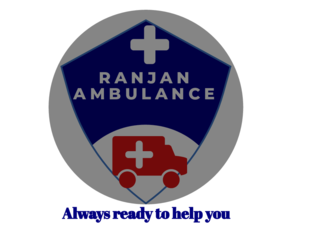
Ambulance Services in Arrah: Ensuring Swift Emergency Healthcare
Arrah, a bustling city in the Bhojpur district of Bihar, India, serves as a crucial hub for commerce, education, and administration. Like many urban centers in India, Arrah faces significant healthcare challenges, exacerbated by its rapidly growing population and infrastructural constraints. This article explores the importance, infrastructure, challenges, and impact of ambulance services in Arrah.
Healthcare Landscape in Arrah
Arrah, located on the banks of the river Son, is the administrative headquarters of the Bhojpur district. The city is equipped with several healthcare facilities, including hospitals, nursing homes, clinics, and diagnostic centers, catering to the medical needs of its residents. These facilities play a vital role in providing healthcare services, but accessing timely emergency medical assistance remains crucial, especially in a city experiencing rapid urbanization.
Importance of Ambulance Services
Ambulance services in Arrah city are indispensable for several reasons:
Timely Emergency Response: Ambulance services ensure prompt medical transport during emergencies such as accidents, heart attacks, strokes, and other critical health crises. Quick access to medical care significantly enhances the chances of survival and recovery for patients.
Medical Transport Accessibility: Ambulances facilitate the transportation of patients from the site of the emergency to appropriate healthcare facilities, ensuring they receive timely treatment and specialized care.
Emergency Preparedness: Efficient ambulance services contribute to the overall preparedness of the healthcare system in Arrah, ensuring that emergency medical responses are swift and effective.
Types of Ambulance Services Available
In Arrah, ambulance services are typically categorized into two types based on their capabilities:
Basic Life Support (BLS) Ambulances: These ambulances are equipped with essential medical equipment such as oxygen, basic medications, and first aid supplies. They are staffed with trained paramedics capable of stabilizing patients during transportation to hospitals or healthcare centers.
Advanced Life Support (ALS) Ambulances: ALS ambulances are equipped with advanced medical equipment, including cardiac monitors, ventilators, and medications for intensive care. They are staffed with paramedics or emergency medical technicians (EMTs) trained to handle critical medical conditions and emergencies.
Infrastructure and Operation
The infrastructure supporting ambulance services in Arrah includes:
Ambulance Fleet: Managed by government health departments and sometimes complemented by private healthcare providers, the ambulance fleet consists of vehicles suited for urban and suburban environments. These vehicles are equipped to navigate congested city streets and respond promptly to emergency calls.
Emergency Dispatch Centers: These centers serve as communication hubs, receiving emergency calls and dispatching ambulances based on the nature and severity of the medical emergency. Coordination with hospitals and healthcare facilities ensures seamless transfer of patients for further medical treatment upon arrival.
Training and Staffing: Ambulance services in Arrah are supported by trained paramedics, EMTs, and drivers who undergo regular training to maintain proficiency in emergency medical care and safe transport practices.
Challenges and Solutions
Despite their critical role, ambulance services in Arrah encounter several challenges:
Traffic Congestion: Urban traffic congestion poses a significant challenge for ambulance services, potentially delaying response times to emergencies. Implementing traffic management strategies and designated ambulance lanes can mitigate these challenges.
Awareness and Accessibility: Public awareness about when and how to access ambulance services during emergencies remains essential. Conducting public education campaigns and leveraging technology for emergency response awareness can improve accessibility.
Infrastructure Development: Continued investment in road infrastructure and ambulance fleet maintenance is necessary to ensure reliable and efficient ambulance services, especially during adverse weather conditions.
To address these challenges, initiatives include:
Technology Integration: Incorporating GPS tracking systems and mobile applications for emergency dispatch and patient tracking to improve response times and coordination.
Community Engagement: Conducting health awareness programs and training sessions on emergency response and first aid techniques to empower communities and promote proactive healthcare-seeking behavior.
Public-Private Partnerships: Collaborating with private healthcare providers and non-governmental organizations (NGOs) to expand ambulance fleet capacity and enhance service coverage in Arrah.
Impact on Healthcare Outcomes
Efficient ambulance services in Arrah city contribute significantly to improved healthcare outcomes:
Reduced Mortality Rates: Timely access to medical care through ambulance services helps reduce mortality rates associated with critical conditions and accidents.
Enhanced Patient Care: Prompt transportation in ALS ambulances allows for early intervention and specialized medical treatment, improving outcomes for patients requiring intensive care.
Healthcare Access Equity: Ambulance services ensure equitable access to emergency medical transport, regardless of socioeconomic status or geographic location, thereby reducing disparities in healthcare access.
Future Directions
Looking ahead, enhancing ambulance services in Arrah involves:
Technology Advancements: Continued integration of advanced technologies such as telemedicine, real-time data analytics, and mobile health applications to enhance ambulance service efficiency and patient care.
Capacity Building: Continuous training and skill development for ambulance staff to ensure they are well-equipped to handle diverse medical emergencies and provide compassionate patient care.
Policy and Governance: Strengthening regulatory frameworks and governance mechanisms to ensure sustainable funding, efficient service delivery, and accountability in ambulance operations.
Conclusion
Ambulance services in Arrah city are essential for providing timely emergency medical assistance, ensuring swift transportation of patients to healthcare facilities, and enhancing overall healthcare access and equity. As the city continues to grow and evolve, it is crucial to prioritize investments in healthcare infrastructure, including ambulance services, to meet the increasing demand for emergency medical care. Through innovation, collaboration, and community engagement, Arrah can strengthen its ambulance services, improve healthcare outcomes, and enhance the quality of life for its residents.
